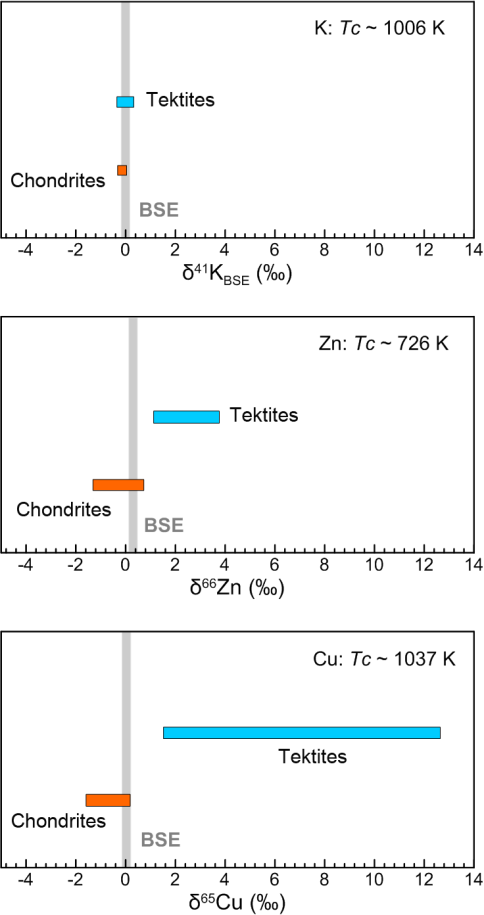On August 15, Geochimica et Cosmochimica Acta published the latest research results of high-precision potassium isotopes by the Purple Mountain Observatory, Chinese Academy of Sciences. It reveals no discernible K isotopic fractionation in tektites formation, or during the transformation from upper continental crust materials to tektites. This study is of great scientific significance to reveal the depletion mechanism of volatile elements in the inner Solar system. With the revolutionary development of isotope mass spectrometry, especially the advent of Multicollector-Inductively Coupled Plasma Mass Spectrometer (MC-ICP-MS), the new branch of non-traditional stable isotope geochemistry emerged and developed rapidly, becoming one of the biggest highlights in the field of geochemistry in the first decade of this century. In the past few years, a high-precision K isotope method (with internal precision of better than 0.05‰; 2 standard error) has been developed using MC-ICP-MS, improving the precision by an order of magnitude compared to previous methods using SIMS or TIMS. In particular, the comparative analysis of Apollo lunar samples shows that the potassium isotope of the moon is 0.4‰ heavier than the earth, which provides a strong evidence for the origin theory of high energy and high angular momentum impact of the moon. 
By with JIANG Yun Figure . Comparison of K, Zn and Cu isotopic compositions in the BSE (Bulk Silicate Earth), chondrites, and tektites. Tektites are natural glassy objects formed from the melting and rapid cooling of terrestrial rocks during the high-energy impacts of large extraterrestrial bodies on the surface of the Earth. In collaboration with teams from Washington University in St. Louis and Harvard University, Neptune MC-ICP-MS was used to analyze the potassium (K) isotopes and zinc (Zn) isotopes of tektites (Figure 1 below). It shows no significant potassium isotopic fractionation in tektites, while Zn isotopes show a large variation even within one specimen. Further thermochemical calculations indicate that chalcophile elements Cu and Zn can be vaporized much easier than K and thus produce large isotopic fractionation. In contrast, the lithophile element K is more prone to remain in the silicate melt because of its very low activity coefficient in the melt, and thus the K isotopes remain unfractionated. The first author of this paper is Yun Jiang, an associate researcher in Purple Mountain Observatory. The link to the article is: https://doi.org/10.1016/j.gca.2019.06.003. |
